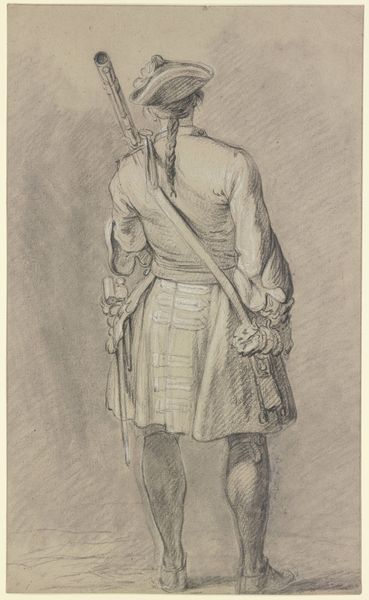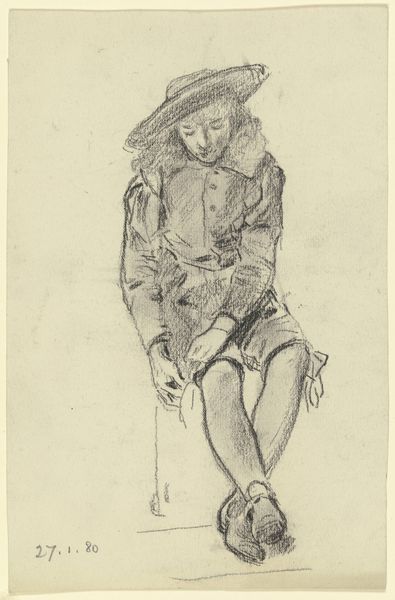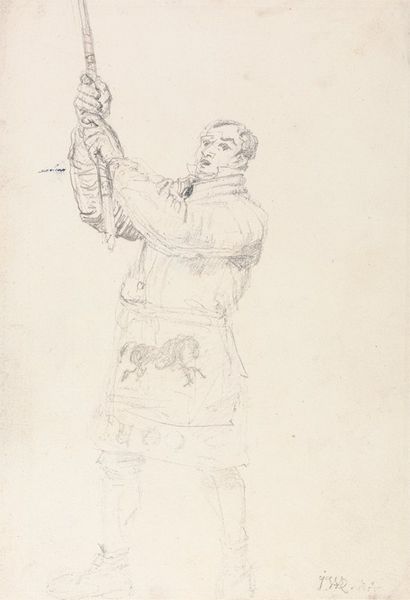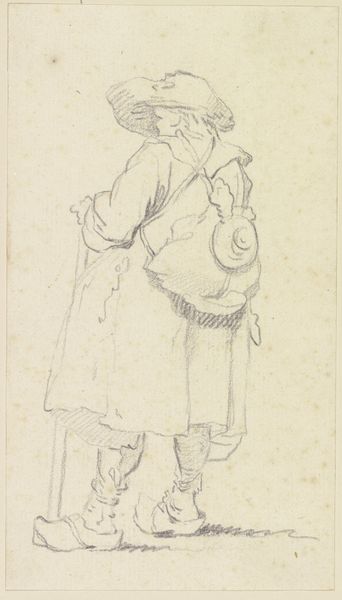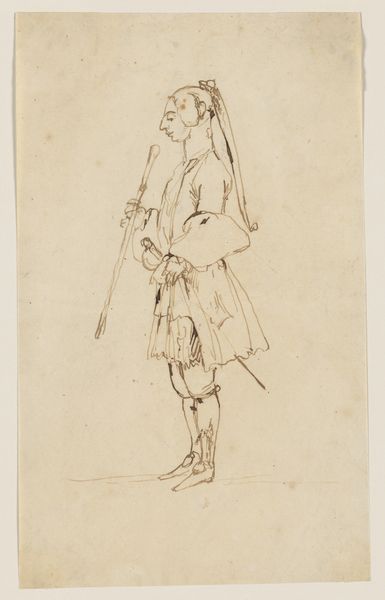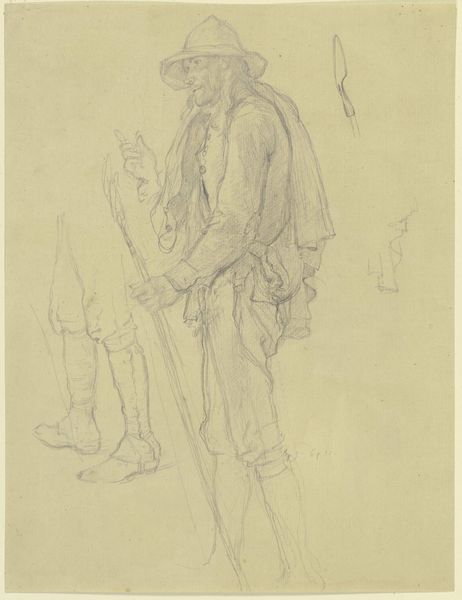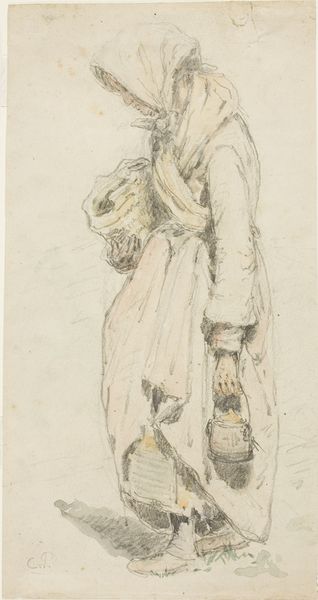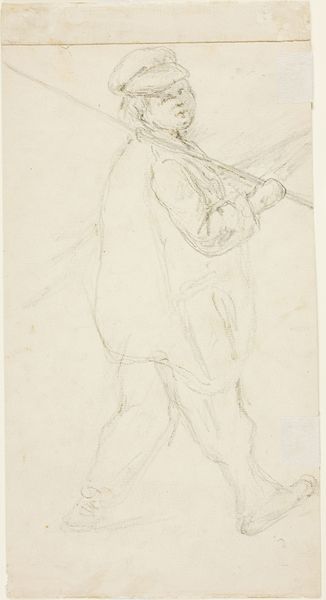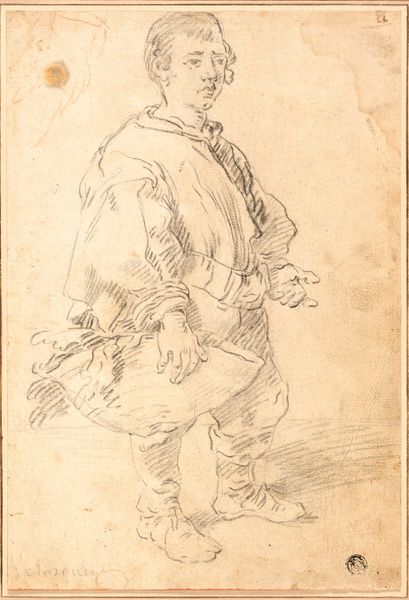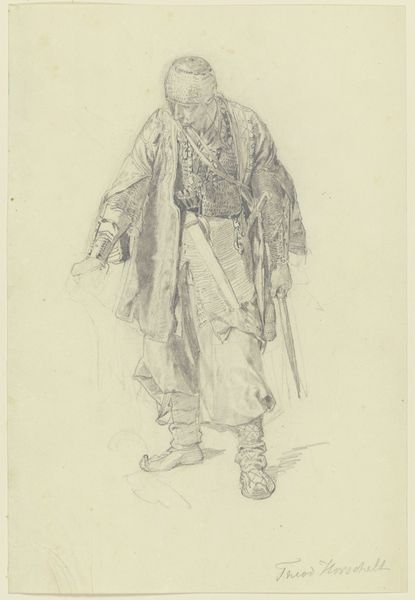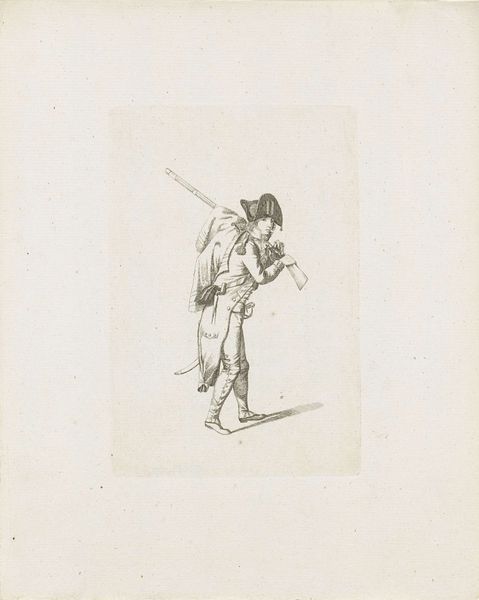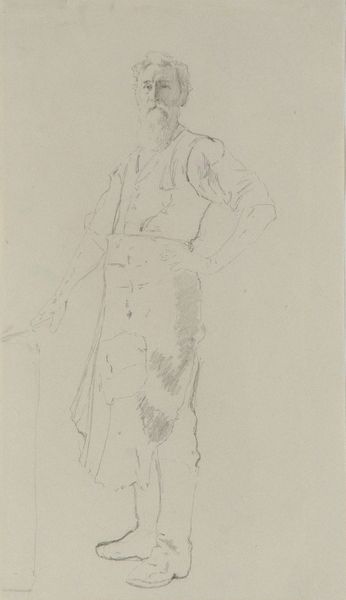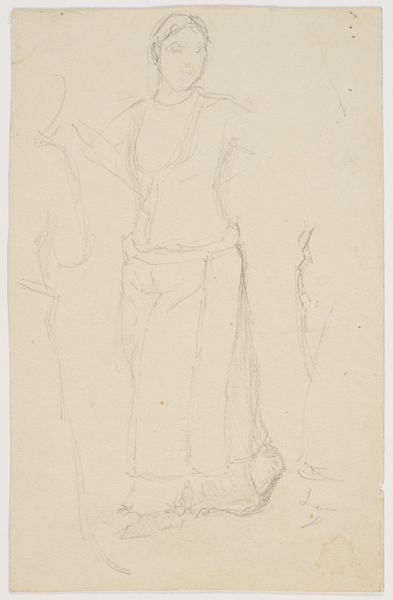
Armed Soldier (recto); Fragment of an Armed Soldier (verso) n.d.
0:00
0:00
drawing, paper, graphite
#
portrait
#
drawing
#
figuration
#
paper
#
pencil drawing
#
graphite
#
academic-art
Dimensions: 254 × 160 mm
Copyright: Public Domain
Curator: Here we have a drawing titled "Armed Soldier," created by François Huard. Editor: I’m immediately drawn to the fragility of the medium – graphite on paper – juxtaposed with the subject matter, a soldier. It lends him a certain vulnerability that traditional depictions of armed figures often lack. Curator: Precisely. And, dating from an unknown time, the artwork presents us with a subject situated within a visual tradition. How do we interpret an armed soldier today through this delicate artistic rendering? Editor: It certainly makes you question the glorification of military might that we often see. This isn't some imposing hero; it's a person, rendered in tentative lines, almost like a sketch of an idea rather than a finalized monument. Curator: I think Huard might be tapping into the visual language of military portraiture and subverting it slightly. Academic art often portrayed soldiers as paragons of virtue. Here, the soldier's slightly awkward posture suggests something different. It also acknowledges the social hierarchy and class issues deeply embedded in the figure of a soldier, where soldiery has so often been the lot of the poor and dispossessed. Editor: Absolutely, especially if we consider that "armed" doesn’t necessarily equate to "powerful." It prompts us to contemplate the different roles that arms play depending on the bearer’s gender, class, and status. It asks, who benefits from images of armed soldiers? Who is glorified and who is erased? Curator: Indeed. What might at first glance appear to be a simple figuration, turns out to invite complex discussions about the realities of militarization. I like the tension here. Editor: The best art often resides in that tension, sparking necessary dialogues. It’s why engaging with art's historical and social contexts is so crucial. Curator: Absolutely. It makes you reflect upon not only the drawing itself, but also its significance within our modern world. Editor: A welcome disruption.
Comments
No comments
Be the first to comment and join the conversation on the ultimate creative platform.
